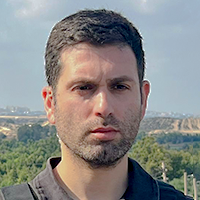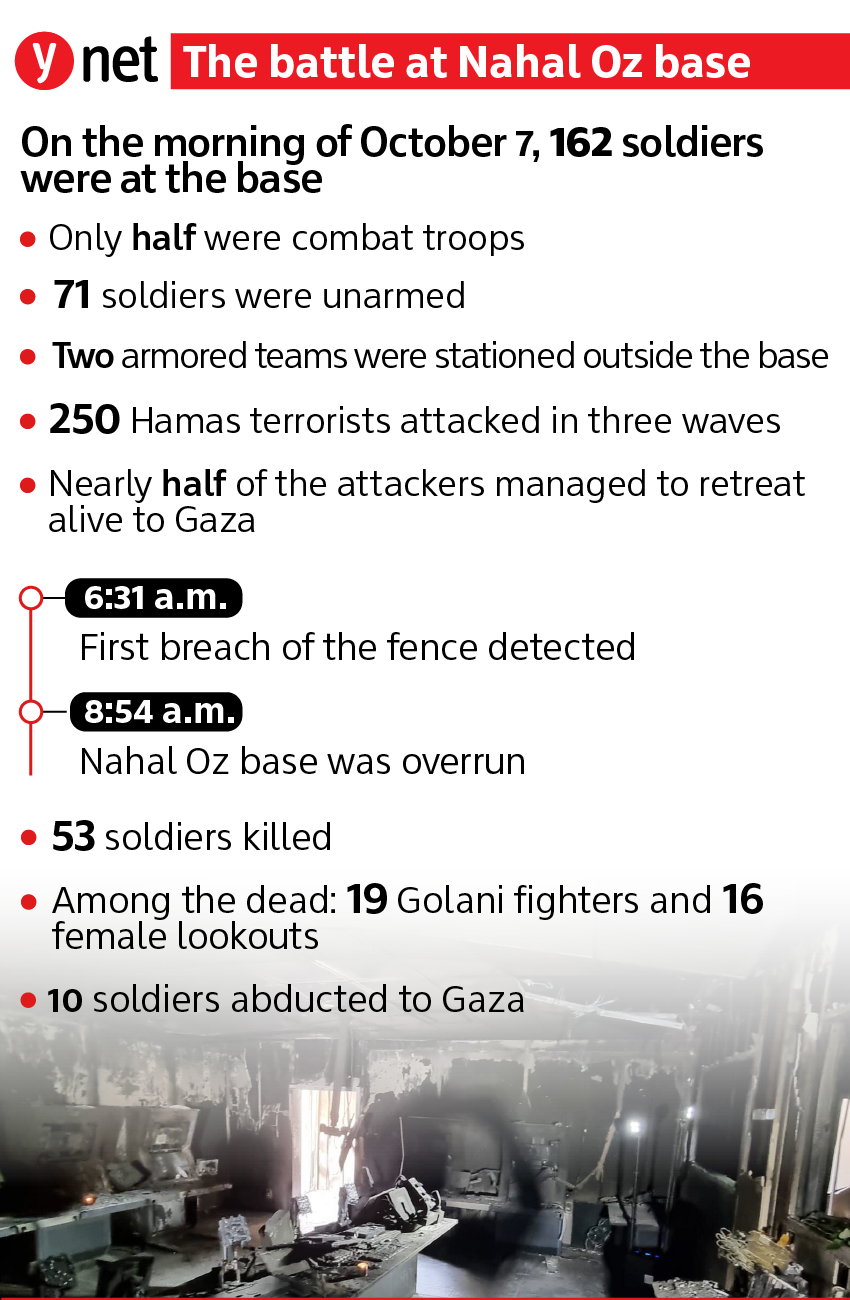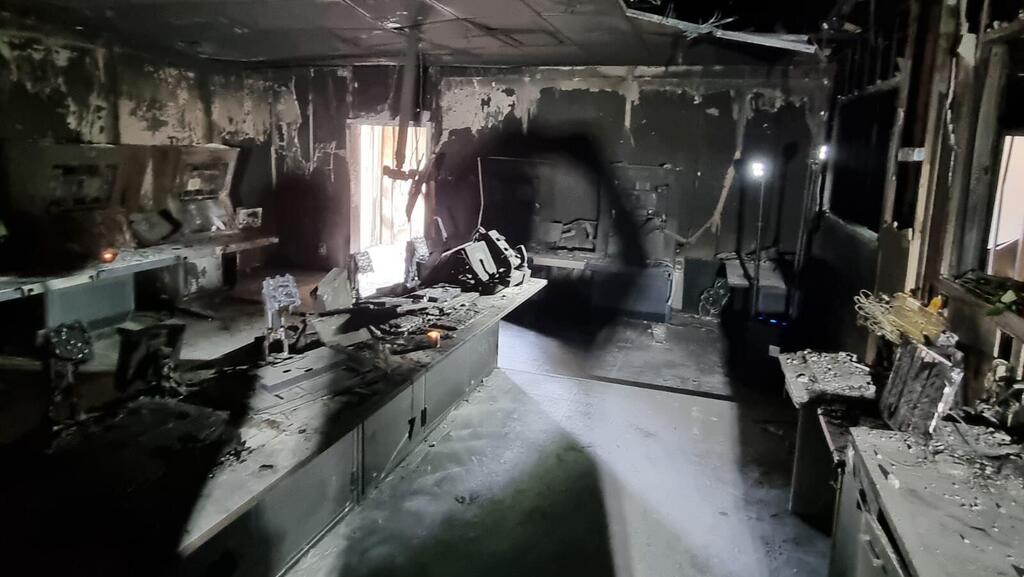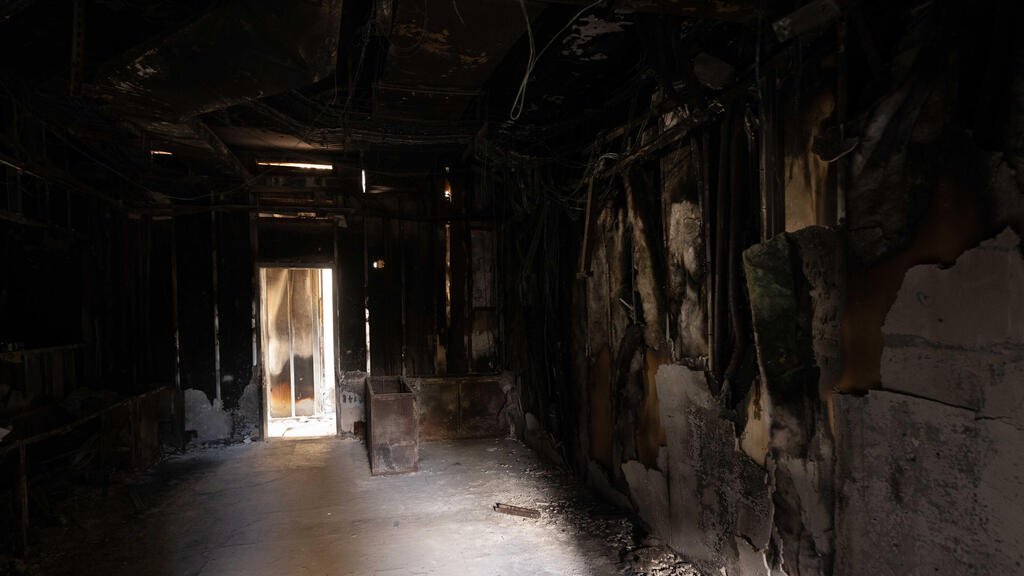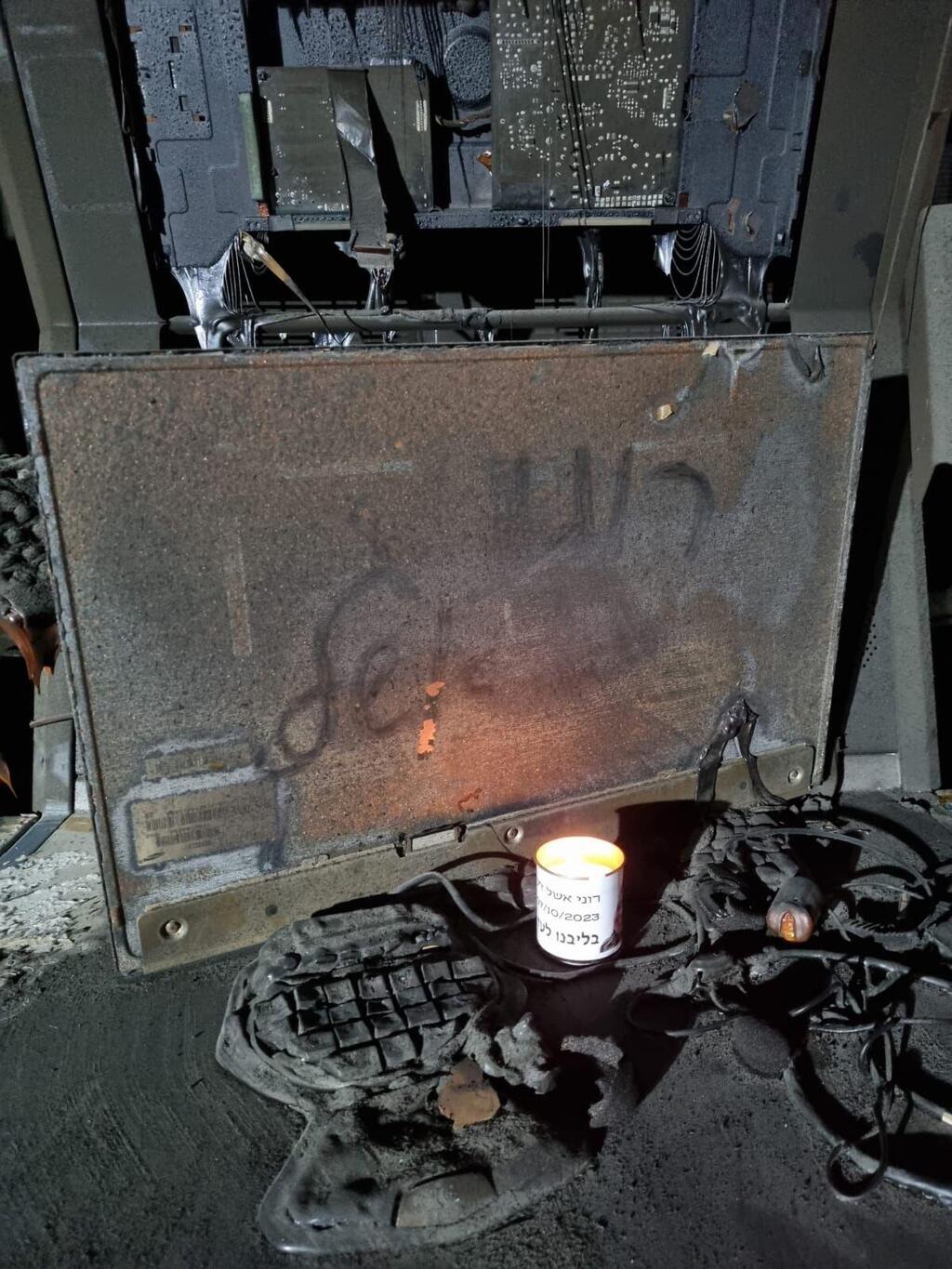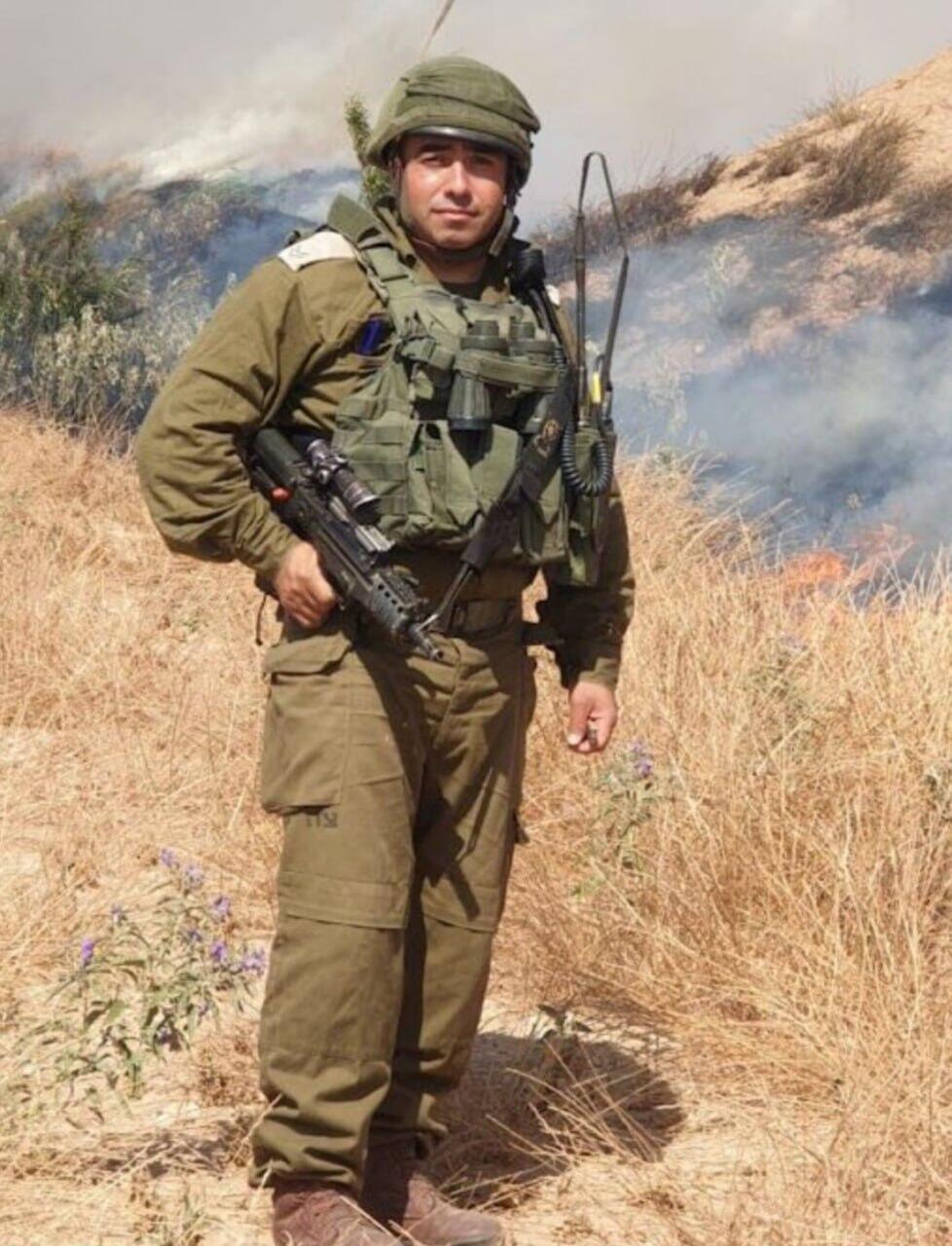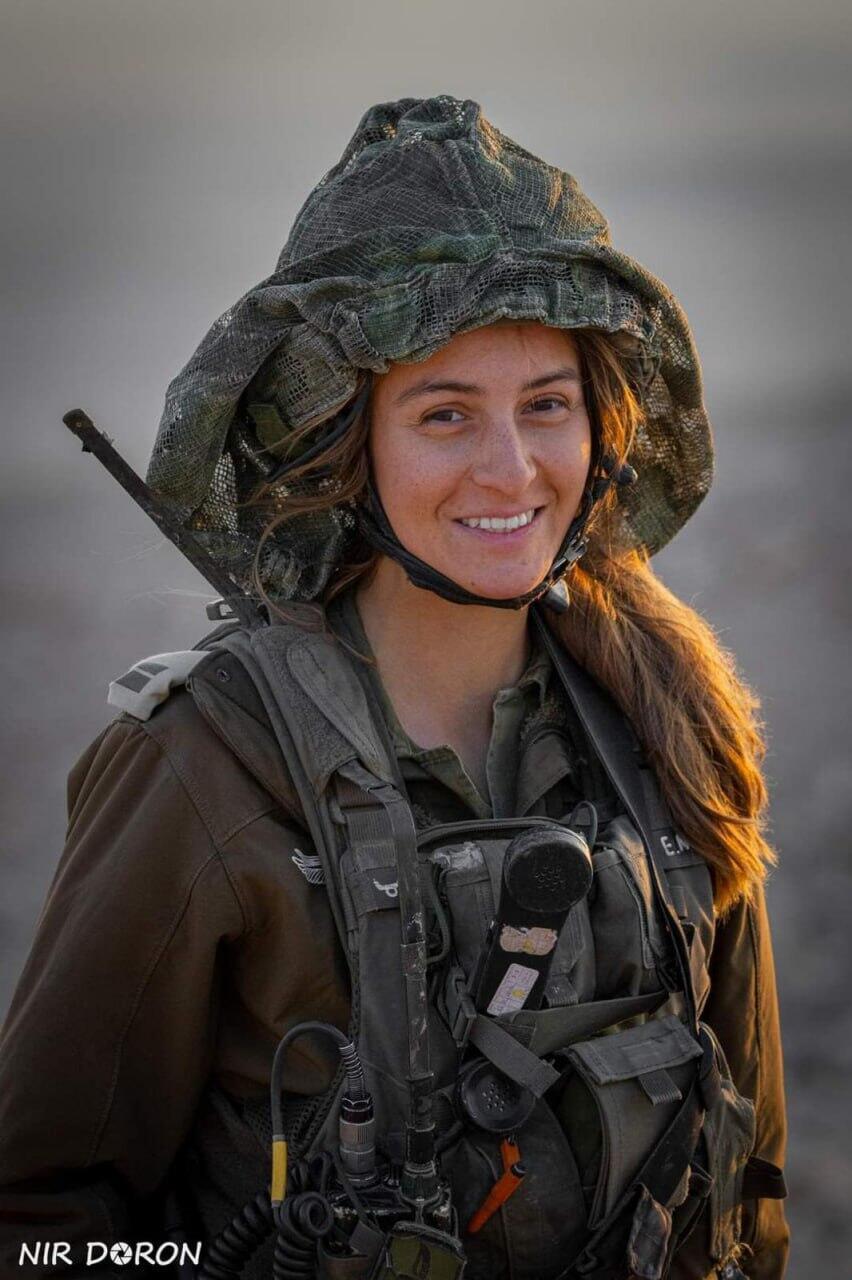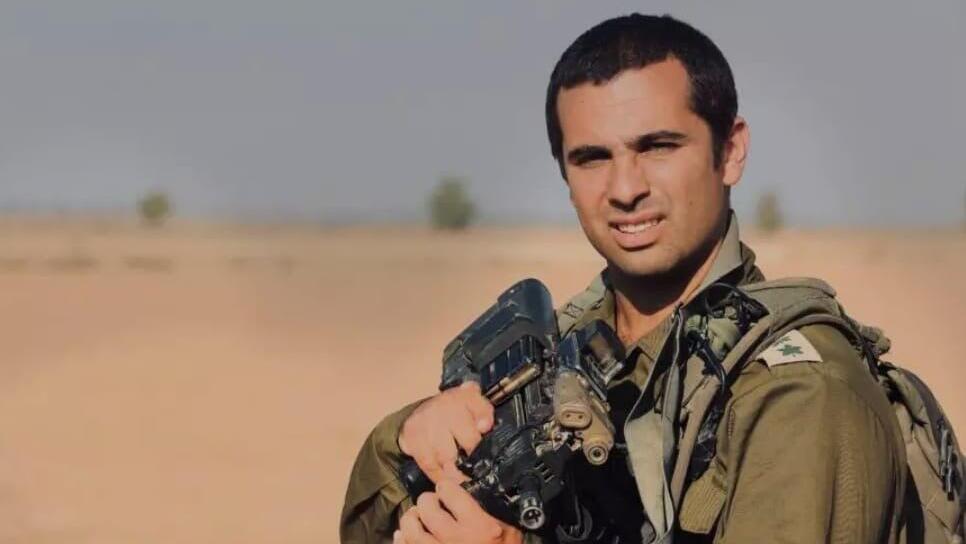Getting your Trinity Audio player ready...
The large military base, located a few hundred yards from the Gaza border, was not drilled for an attack; tank crews were told not to be on standby for their tanks; defense positions facing Shijaiyah were empty, and only one soldier, a sentry, was guarding the entire base—these are some of the disastrous initial conditions that contributed to the rapid collapse of the base.
Intelligence gathered from the Gaza Strip during the war revealed a Hamas attack manual for the Nahal Oz base. According to senior IDF officials, it wouldn’t be out of place in an elite unit’s operation file, detailing all the base's weaknesses and characteristics: the gaps in the fence through which 60 Nukhba terrorists infiltrated during the first wave, ultimately taking the base within half an hour; the holes in the western wall, which were used as firing slits for gunmen to shoot crossfire at the soldiers inside; a reckless IDF procedure that approved reducing combat forces by about half on weekends so soldiers could enjoy time off at home; precise locations of every room, command center, office, and building within the camp; daily life routines; the number of weapons; the exact location of the bomb shelters, and more.
Hamas knew it would be relatively easy to infiltrate the base. Its perimeter watch towers were not only empty and lacking machine guns (which were locked in storage), but the base also lacked significant trenches and obstacles. The investigation reveals that no military routine was maintained at the base, which housed several units, each in a different corner: no formations, no ceremonies, no daily briefings, and no posts. According to various testimonies, Hamas even built a model of Nahal Oz in Gaza to train for its conquest, understanding that if they took it and the other four battalion and brigade bases in the area, the way to murder and kidnap in southern Israeli towns would be quick and easy, as it turned out to be.
8 View gallery


The 53 soldiers who fell in the battle at Nahal Oz base on October 7, 2023
(Photo: IDF, courtesy of the families)
The result was the loss of 53 soldiers at the Nahal Oz base: 22 combat support soldiers, including 16 lookouts, 31 fighters, including 19 from the Golani Brigade, and 10 who were kidnapped to Gaza.
Every second was filmed, every angle documented
The investigation, conducted over ten months by a team led by Colonel A., the commander of the IDF’s 551 Paratroopers Reserve Brigade, uncovered strange contradictions in the after-action reports of the units that operated at the base that Saturday. To uncover the truth, he organized all the data, communications, and hours of recorded footage.
Colonel A.'s life was relatively easy, despite the differing testimonies of the survivors. He had almost every moment at the base captured on video. He received footage from Hamas terrorists’ GoPro cameras, drones used by the terrorist organization, armored vehicle cameras, and security cameras. One of the videos lasted an hour and 50 minutes, from when the attacker turned on the camera at 6:00 a.m. as he aimed his weapon in the Shijaiyah neighborhood until the attack ended and he returned to Gaza, along with about half of the Nukhba terrorists who had infiltrated the base.
The IDF said the investigation was harder for Colonel A. than any of the battles or experiences he went through in his 20 years of service with the IDF's Shayetet 13 naval commando unit, even harder than the moments when he lost 20 of his soldiers during the war. Unlike other investigators, and against a backdrop of poor command climate, Colonel A. recommended personal measures, possibly even dismissals, against the senior officers responsible for the Nahal Oz debacle.
His recommendations have not yet been accepted due to outgoing Chief of Staff Herzi Halevi's decision to leave the decisions to his successor, Major General Itzik Tzukrel. Even the commander of the northern brigade on October 7, Colonel Haim Cohen, who was responsible for the faulty operational management of the base before the war, remained in his position until recently, when he announced he would step down.
“The story of the fall of Nahal Oz could easily be linked to the long-standing failures that strengthened Hamas, the intelligence failure to provide warning, and the large-scale attack that included dozens of combat points,” said an IDF source. “But in reality, the events there revealed something else: a shift in operational culture in recent years.”
Hamas' goal: Capture in 15 minutes
On the morning of October 7, there were 162 soldiers at the Nahal Oz base—about half the usual number on weekdays—according to a policy implemented by the IDF General Staff five years ago to accommodate soldiers’ preferences, based on the assumption that terrorists would only strike on weekdays. Of these soldiers, 81 were fighters, 91 carried weapons, and the rest were combat support personnel, including spotters from the Northern Brigade, medics, drivers, and logistics and armament soldiers.
The night before the invasion, two separate breaches were detected in the security fence, just a few hundred yards from the base, which is one of the closest to the border. The update was sent at 4:00 a.m. to the Northern Brigade and the division, which were focused on nighttime assessments due to signs of an impending threat from the Gaza Strip. These signs, however, were not passed down to the Border Defense Battalions in order to avoid compromising intelligence sources. The breach in the fence was not fully analyzed, and according to the investigation team, it likely wasn’t linked to the upcoming invasion. However, it did lead to increased caution, and the forces were instructed to delay their morning patrol to verify no further infiltration at the border.
Hamas’s operational plan to capture the Nahal Oz base, found in a document in Jabalia, reveals the sources from which Hamas gathered information about the base. These included not only drones launched intermittently but also hundreds of photos and videos uploaded by soldiers to social media from within the base itself, as well as media reports by the IDF about frequent changes in defense strategies in the sector.
“Hamas knew where every commander slept, where the dining hall was, which sections of the agricultural roads leading from the fence to the base could slow them down, and determined in their plan that the Nukhba battalions attacking the base had to do so within 15 minutes to ensure its capture,” the investigation report states. “Hamas analyzed that it would take 15 minutes for a tank to reach Nahal Oz in case of an event. They monitored drills to determine how long it would take for nearby forces to reinforce. They understood they also had to neutralize the nearby Pega outpost, as it housed mortar positions supporting Nahal Oz, which they successfully did.”
The base was divided in advance, with each Nukhba unit assigned to capture a specific area. The first wave, between 6:30 and 7:00 a.m., included 65 of Hamas' best fighters, and another 50 joined the second wave by 9:00 a.m. By 10:00 a.m., 100 more terrorists joined, completing the capture, killing, and kidnapping operations. At the height of the invasion, about 250 Hamas terrorists were inside the Nahal Oz base, which had a perimeter of only 1,200 meters.
The commander of the Nukhba platoon was killed early in the battle, but his force continued according to plan. Half of the infiltrating terrorists were killed, while the rest managed to return to Gaza. The Hamas force was well-equipped, and in addition to their numerical advantage, they had a deadly arsenal: while the IDF saw no need to regularly distribute fragmentation grenades or mortar grenades to its soldiers, and machine guns were locked away in storage, Hamas arrived with numerous RPGs, explosive devices of various types, Kalashnikov rifles, and more.
An investigation into the first Nukhba platoon’s conduct revealed further intelligence failures. The evening before, starting around 6:00 p.m., the Nukhba platoon had been briefed for the invasion plan. First, the commanders were briefed, followed by the terrorists. All of this occurred in Shijaiyah, an area that should have been covered by the IDF's Gaza Division’s Combat Intelligence Battalion. Yet, no one noticed the activity just one or two kilometers from the border. The second Nukhba platoon that infiltrated the base came from the Al-Furkan neighborhood, a bit deeper into Gaza City.
The investigation found that the entry of Golani's 13th Battalion into the area was relatively smooth. Four months before the massacre, a brigade-level drill had included scenarios such as a Nukhba platoon raiding the nearby Pega outpost and an attack on a combat team by a Hamas drone. However, the scenario of an attack on the base itself was never practiced, even though, as noted, the base was only a 15-minute jog from the hostile Shijaiyah neighborhood, less than a kilometer from the border, and fully exposed to Gaza due to the area's topography.
Despite the Nukhba raid scenarios discussed by the Gaza Division the year prior to the war, no one thought it necessary to drill Nahal Oz soldiers. Accordingly, as mentioned, the base was guarded by only one soldier at a sentry post and a few others guarding internal sections of the base, mainly to prevent theft, including a section with damaged observation balloons. The standby unit assigned to protect the entire base consisted of a platoon commander and three soldiers.
Control at Nahal Oz had been lax even before October 7, despite inspections that seemingly had no effect. It took Colonel A.’s team four full months to compile a basic unit roster of the soldiers at the base as of 6:29 a.m. This indicates just how far basic norms had deteriorated at this front-line, threatened base.
“This base is right across from the kibbutz, and the civilian atmosphere had a negative impact,” the investigators noted. “Golani’s battalion worked hard during this period, but was focused on the disturbances at the border. On Friday afternoon (October 6), it was once again stationed along the border, reinforced slightly by snipers from the Paratroopers’ reconnaissance unit and the counter-terrorism unit, but pulled back in the late afternoon because the border was unusually quiet and empty.”
The shift in the IDF’s operational culture worsened with the change in standard operating procedures known to every soldier in the army until a decade or two ago in border areas: readiness at dawn. Under this procedure, all soldiers are expected to wake up and prepare to defend their post or sector, understanding that these are the most volatile hours, between the dark of night and the first light of dawn. This procedure, it turns out, was modified and contracted so that only the command posts and standby platoons performed it with the sector patrol.
One of Golani’s platoon commanders, who waited at 5:30 a.m. at the base junction for a platoon from his unit to join in carrying out the procedure, angrily sent them back to base for being late. Another small unit didn’t wake up at all, according to the investigation. At 6:29 a.m., with the first barrage of fire, Golani company commander Maj. Shilo Har-Even, who was killed in action, shouted, “This is not a drill. We’re under fire. Iron Dome interceptions. Purple rain.”
“Purple rain” is a code used in IDF operations that originated during the security zone in southern Lebanon, instructing soldiers to take positions at a post, understanding that a barrage of mortar shells could signal the start of a ground assault. Purple rain in 2023 in the IDF was primarily a reference to the Red Alert system. A video from a soldier’s phone at 6:30 a.m. showed Golani fighters laughing inside a bomb shelter in a relatively calm atmosphere. Some were still in their sleepwear, and one officer, wearing only a vest, followed the unfolding events on his radio while waiting for orders. Later, that officer would be one of the heroes of the difficult battle. No one in the IDF had taught these soldiers the real meaning of “purple rain” or what to do in such a situation.
From this point onward, the investigation notes, the spotters maintained remarkable composure, providing detailed, life-saving reports over the radio and did not stop, even when they realized that dozens of terrorists who had just blown the fence were racing toward their base in trucks and on motorcycles.
Minute by minute: Fighting at Nahal Oz base
6:31 a.m.: A lookout spots the first Hamas cell before it breaches the fence and immediately reports it to the Golani force outside the base. The commander of the Nahal Oz sector, Golani 13th Battalion Deputy Commander Major N., informs all forces via radio: “This is a complex event. Purple rain and Turkish cavalry” (code names for infiltrating terrorists).
6:33 a.m.: Another lookout reports the first explosion at the newly constructed “formidable” border fence, which easily collapses, allowing a Nukhba unit to quickly enter the area in trucks and motorcycles, each carrying two terrorists. The platoon commander, Har-Aven, orders everyone to prepare: "This is definitely a complex event."
6:35 a.m.: Major Har-Aven joins a nearby company combat team in his armored patrol jeep. He quickly boards a heavily armored Namer APC attached to a tank. He forgets his mobile phone in the jeep.
6:36 a.m.: Two Golani soldiers run under mortar fire to reinforce their comrade, who is guarding the base's gate alone. The trio—Staff Sgt. Dor Lazimi, Staff Sgt. Ori Karmi, and Staff Sgt. Adir Bogale—will fight heroically at their position against dozens of Hamas terrorists until they fall in battle.
6:37 a.m.: Two active-duty soldiers from the northern battalion stationed at the base leave in a jeep as part of a military protocol, despite their comrade, tracker Warrant Officer Ibrahim Kharuba, urging them to stay and defend the camp. Investigators viewed their actions negatively, but like other soldiers in rare instances who did not seek contact, they were hard to judge. The two remained in the sector, found themselves in another battle zone, and fought until they were injured.
6:38 a.m.: A third lookout in the Nahal Oz command post identifies and reports a new breach in the fence and a large-scale infiltration of terrorists about a kilometer from the base. She and her colleagues try to contact the Pega outpost to request mortar fire on the breach area, but communication problems and ongoing fighting at Pega prevent this.
6:42 a.m.: Cpt. Shir Eilat, the lookout platoon commander, constructs a full situational picture for all forces, detailing enemy positions and IDF units. Based on this, the brigade reserves are activated towards Nahal Oz.
6:43 a.m.: Major N., stationed at the observation post, observes a new breach where dozens of Hamas terrorists are heading toward Route 25, which leads to the Sa'ad junction and then to the entire Gaza envelope. He rushes to the base junction to block the infiltration, becoming the first Nahal Oz commander to encounter terrorists. At this point, the commander of a nearby Golani company orders his soldiers to spread out in the base’s fortified perimeter positions.
6:46 a.m.: As commanders fighting in the base area shout over the radio, “Where are the tanks?!” two tank crews, who had not been put on relevant standby, mount their tanks, crush 3-4 terrorists, and fire a shell, killing another five in the base’s southwest corner, where about 40 terrorists are concentrated. The tank crews do not see the remaining terrorists and continue toward a position near the border, following their training protocol to reach the fence as quickly as possible, “because the enemy is in Gaza.”
6:49 a.m.: Major Har-Aven realizes he is in command of the sector alone and divides his limited forces—one tank and one Namer APC—into two fighting hubs. A mortar section commander from a nearby force requests permission to fire. The debrief describes this as another example of the significant cognitive gap among the soldiers, as they were trained this way, despite the fact that the event had been ongoing for 20 minutes.
6:50 a.m.: A tank arriving from the outpost towards Major Har-Aven receives orders from him to head to the Kfar Aza. However, the arriving force struggles to understand what’s happening in the settlement, takes a position outside, and becomes ineffective. Meanwhile, Major N., continuing to fight desperately at the base entrance, is hit by a bullet to his head and severely injured. His soldiers try to stabilize him under fire, but the already-weak human defense line collapses after about ten minutes, and the terrorists breach the base.
6:51 a.m.: The number of soldiers at the base when the attack began, 18, steadily decreases due to numerous casualties. The terrorists exploit gaps in the outpost fence and holes in the western wall, intended for lifting concrete panels, to fire crossfire from outside into the soldiers.
7:00 a.m.: Major Har-Aven receives orders from the brigade commander to command the battalion. The remaining armed personnel in the base focus on protecting the fortified rooms, where dozens of unarmed and frightened soldiers are sheltering. Major Har-Aven receives another report about the dire situation in Kfar Aza and sends his reconnaissance force with two jeeps, but they do not enter the settlement, likely due to fear, and head north instead. Later, they will testify: “We saw an RPG missile flying near us, so we didn’t enter Kfar Aza and continued to the outposts, then to Sderot.” The debrief viewed their conduct negatively, but they did not flee or hide, instead reaching the Sderot checkpoint and engaging in heavy fighting with the terrorists there.
7:08 a.m.: More than 40 terrorists breach the weakened defense line at the base and begin firing at its buildings. Cpt. Shir Eilat, the lookout officer, hears them approaching the command post door and physically raises her orders according to the "position abandonment procedure." 4-5 staff officers from the Golani 13th Battalion stay with the lookouts and do not exit to fight.
7:30 a.m.: Major B., commander of Company B, is occupied with blocking a Nukhba unit attempting to infiltrate the Nahal Oz kibbutz. Major Har-Aven returns to the base with his Namer APC and sprays terrorists in his path with a MAG machine gun. At this point, an anti-tank missile is fired at him, severing his hand almost completely.
7:41 a.m.: The first airstrike, by a UAV, disrupts the movement of terrorists in a field adjacent to the base.
7:55 a.m.: Major Har-Aven retreats slightly due to his injury and meets his friend, Major B., the second-in-command, at the gatehouse to receive help with the kibbutz sector. The two plan an assault on the captured base with two tanks and a Namer APC. Major B. tells his injured friend, still on his feet: “Let’s go, it’s just you and me against the world.”
7:56 a.m.: In these minutes, moments of heroic valor are seen in the fortified rooms. Captain Eden Nimri, commander of a Sky Rider team, manages firefights with terrorists surrounding the shelter alongside four of her soldiers. Female soldiers throw back two grenades thrown at them; the third explodes and injures them. The chaos is used by 11 other female soldiers to escape to another shelter. The terrorists follow them, but a UAV strikes nearby as they are at the door, forcing the terrorists to flee, and the 11 soldiers survive.
8:00 a.m.: Major Har-Aven begins fighting inside the outpost with the tank but realizes it is ineffective compared to the Namer APC. He decides to exit because the terrorists flee whenever they see the armored vehicles, while they continue slaughtering the rear-echelon soldiers in the camp. It is difficult for his three Namer soldiers to exit into the hellish scene, but he urges them: “This is why we enlisted, this is what we swore to.” They go out with him into the battle for their lives, as their commander bleeds and has his hand severed. Few against many, they charge and kill terrorists, but deadly fire from four directions hits them. Major Har-Aven and two soldiers are killed. The radio operator, Soldier S., takes a bullet to his weapon but continues to fight.
8:54 a.m.: Nahal Oz base is finally overrun. The two tanks inside attempt to evacuate casualties, including Major Har-Aven and his soldiers. Eventually, they make the difficult decision to exit towards the border to block the continuing invasion. At this point, around 200 terrorists flood the base. The small armored team, along with a platoon sergeant from Golani, takes position in a field between the base and the border, facing 60 terrorists of the third wave rushing toward them. The soldiers charge forward, absorbing anti-tank missiles and heavy fire, killing terrorists until they, too, are overrun.
9:00 a.m. - 12:00 p.m.: The toughest hours at Nahal Oz base. Terrorists move from shelter to shelter, from room to room, including killing soldiers from the Balloon Observation Unit. Air support struggles to assess the situation due to the chaos, smoke, and fires, but succeeds in some disruption strikes around 11:00 a.m. Combat helicopter pilots identify a Humvee stolen by terrorists from the base but suspect it may contain kidnapped soldiers, so they refrain from attacking it. Tracker Ibrahim Kharuba from the village of Marar, raised in the Paratroopers Brigade, guards with two other soldiers the room where the lookouts are hiding. The northern brigade commander instructs him: “Act according to your judgment, you’re the commander there now.” The terrorists call on him in Arabic to surrender. He calls his family to say goodbye, telling the female soldiers, “It has been an honor to die for the country and for you.” He goes to charge and is shot dead.
12:00 p.m.: The command post and adjacent room where 22 soldiers, including lookouts and five staff officers from Golani, are sheltering, are set on fire. Most die from the flames or suffocate from the smoke, but some manage to escape by crawling out through a small window. Investigators struggled to assign blame to those present in the situation, who were simply trying to survive, but concluded, “In the IDF, an officer should leave after a soldier, and a female soldier after a female soldier.” Senior fire investigators who examined the scene found no evidence of harmful chemicals or accelerants used.
1:30 p.m.: The first reinforcements from Shayetet 13 and the YAMAM counterterrorism unit begin arriving and find only one or two terrorist cells that hadn’t managed to retreat back to Gaza. Nahal Oz base is mostly in ruins, with bodies, fire, and smoke.
Conclusions, lessons and recommendations
Lt. Col. Tomer Greenberg, commander of Golani Brigade's 13th Battalion, who later fell in combat in Gaza, had conducted numerous drills for his forces from Nahal Oz, including one just before the massacre, emphasizing the need to be prepared for a surprise attack. However, no exercises simulated an attack on the base itself, which was not organic and included forces from different units that did not know each other—this proved detrimental on the morning of October 7:
The collection battalion’s forces, including the lookouts and the Balloon Unit, were too dispersed across bases in Orim, Re’im and Nahal Oz, contributing to the loss of control and operational confusion in real time.
Although the command post was closest to enemy territory, it wasn’t designated as a defensive target and was only prepared against rocket and mortar threats, with only a fire extinguisher assigned in case of fire.
The division didn’t rehearse scenarios with the brigade, which didn’t train the Nahal Oz battalion, and so on for an attack scenario on the base.
The lack of coverage for the base’s western positions was a critical and dangerous failure.
Base staff officers were sleeping with their weapons not at hand, despite being only 15 minutes from the Gaza Strip.
The debrief concluded:
- Operational norms were lacking.
- A minimum number of forces must be assigned to the outpost at all times.
- Multi-unit bases should be discontinued.
- Command climate was deficient.
The battle at the base represents a profound and painful systemic failure that touches upon the core values of the IDF. While there were moments of heroic valor and exceptional resourcefulness from soldiers and officers, there were also soldiers and commanders who did not seek contact.
The investigation did not examine the lookout warnings prior to the war and how the commanders responded to them, but they clearly warned about the threat. This needs to be investigated separately. Also, the way the IDF handled the bereaved families from the base after October 7 should be reviewed.



